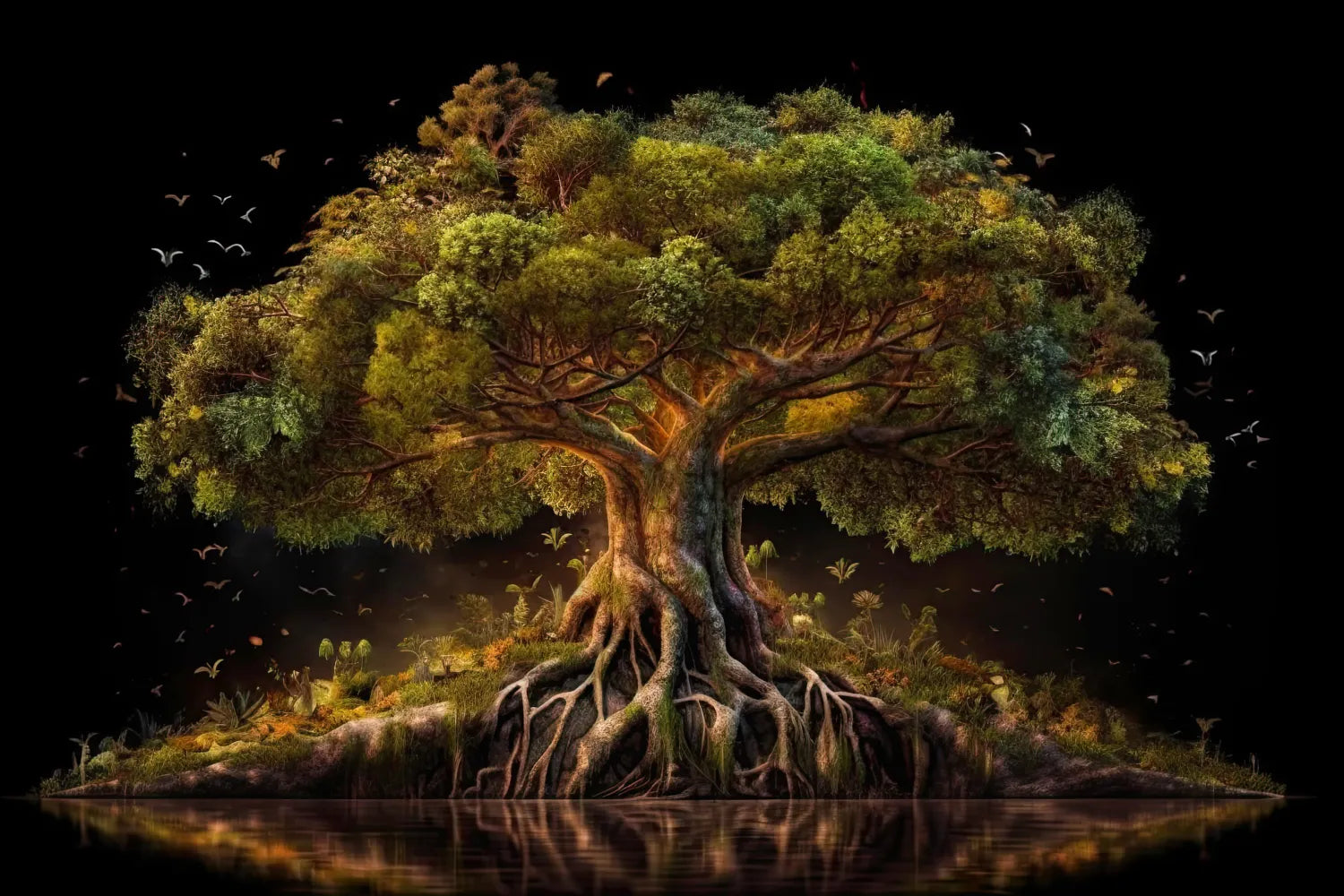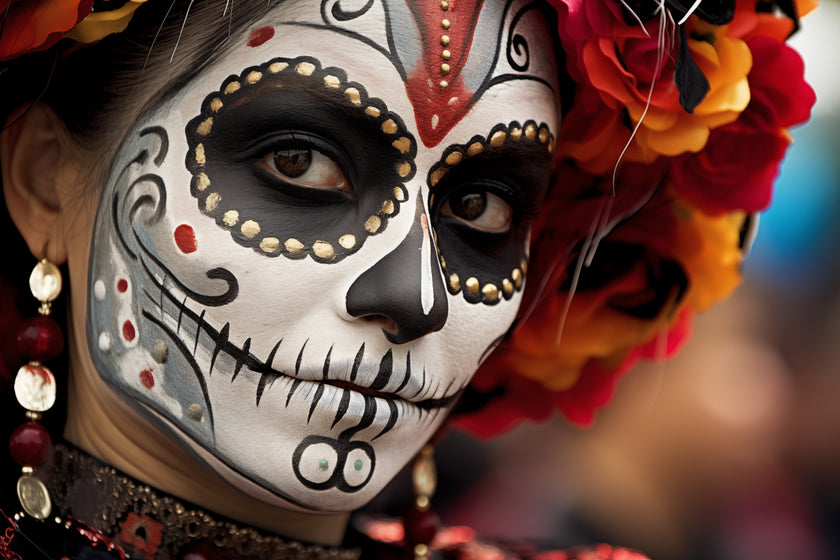The Tree of Life is a powerful symbol revered by people passionate about mythology, the earth, paganism, or ancient religions. Although the symbol is often associated with hippie or naturalist culture, it actually forms its roots (pun intended) in Viking mythology.
If you’re interested in a Tree of Life tattoo, here’s what you should know about its symbolism and significance.
What Is the Tree of Life?

There are two Tree of Life motifs:
The Basic Tree of Life
The nonspecific Tree of Life is a tree with deep roots and high branches, sometimes enclosed in a dome. The Tree of Life is a representation of the idea that everything is connected in life and death and that the universe is constantly renewing itself through a balance and exchange of energy.
The Norse Tree of Life
Yggdrasil, or the Tree of Life, is a representation of the plane we live in. Norse mythology utilizes the Tree of Life to symbolize worlds and realms where people, gods, and mythical beings exist.
Human beings live in Midgard, which is the earthly plane. Above Midgard is Asgard, the realm of the new gods. Along the branches of Yggdrasil are Alfheim (home of the elves), Muspelheim (the world of fire where the apocalypse is said to originate), Vanaheim (home of the Vanir gods of knowledge and the earth), and Niflheim (a mysterious world of mist).
At the core of the roots of the tree is Hel, which is just like hell in Christian literature. Adjacent to Hel are Jotunheim (home of the giants) and Svartalvheim (home of the dwarves). In Norse mythology, dwarves forge weapons for all races of people and gods.
How Is the Tree of Life Depicted?
Tree of Life depictions span from simple to elaborate, depending on the school of thought. The general Tree of Life is usually very simple and leaves room for a lot of interpretation. Yggdrasil, the Norse Tree of Life, typically has a very elaborate depiction loaded with symbolism and lore of old Norse religion.
The General Tree of Life
The general Tree of Life is often depicted as a large tree with balanced roots and branches. Sometimes, a dome is placed over the tree to symbolize that nothing new enters and nothing really exits. We return to the earth when we perish and become a part of the cycle of nature.
The Norse Tree of Life
Yggdrasil is always depicted with a giant snake circling around it. Jormungandr, sometimes called the World Serpent, is the son of the mischievous god Loki and giantess Angrboda.
The world as we know it is said to be held together as long as Jormungandr continues to chase and swallow his own tail. The apocalypse, or Ragnarok, is said to begin when Jormungandr releases his tail.
Ratatoskr the squirrel is also depicted with Yggdrasil. Ratatoskr is said to be a messenger that runs messages from the top of the tree where the eagles live to the roots of the tree where the serpents live, metaphorically acting as the communication liaison between heaven and hell.
Simplistic depictions of the Tree of Life sometimes omit Jormungandr and Ratatoskr, instead focusing on the unique and symmetrical silhouette of the tree with its tall, lofty heavens and deep running roots.
What Is the Meaning of a Tree of Life Tattoo?
The Tree of Life is ordinarily used as symbolism to represent a very specific meaning. The meaning is usually aligned with the type of tree. The nonspecific Tree of Life comes with a simple philosophy and a balanced outlook on life and death. The original Norse version of the tree is packed with meaning.
A Respect for Life and Nature
The Tree of Life symbolizes the seasons, the earth, life, and death. It’s a very complex metaphor that encompasses the nature of the entire world.
We’re born, and we die. Seasons change. Flowers bloom. The cycle of nature runs perpetually. A Tree of Life tattoo can symbolize that someone feels or appreciates harmony within the universe.
A Religious or Spiritual Belief
Although most Norse and Viking mythology concepts have fallen out of favor in modern times, there are still people who actively believe in the old Norse gods as a religion. Old Norse religion or Norse paganism, is a little practiced but still active religion. Some people with tree or life tattoos or other tattoos relating to Norse mythology may be practitioners of this religion.
Whatever You Want It To Mean
There’s a longstanding idea that tattoos need to have a specific meaning, but that isn’t true! Traditionalists abide by certain ideas, but most of us have an expanded view of art.
You can truly get a tattoo simply because you believe it’s cool and beautiful — that’s it. You’re also allowed to attribute your own meaning to your tattoos. You don’t necessarily need to play it by the book — it’s your body, and you should do what makes you happy.
Different Styles of Tree of Life Tattoos
A talented artist can depict any design in nearly any style. Most Tree of Life tattoos are done in a minimalist, Celtic, realistic, or Norse style. Although these styles are the most popular, they aren’t your only option. You can ask your artist about different creative ideas like watercolor or oil-painting-style tattoos if that’s what appeals most to you.
Minimalist Tree of Life Tattoos
The Tree of Life can be represented by a simple silhouette of a tree. You wouldn’t want to get a Tree of Life tattoo as small as a finger tattoo or a tattoo you would place behind your ear because achieving enough detail would be difficult.
It would be unrecognizable in a few years. Smaller, minimalist tattoos less than the size of a dollar bill can capture the essence of the Tree of Life in a simple way.
Celtic Tree of Life Tattoos
A Celtic-style Tree of Life tattoo utilizes a circular shape by rounding out the top of the tree and the roots. The tree is sometimes placed inside a circular frame in a classic woven Celtic design.
The tree and its branches may be solid black with thick and well-defined lines. In a Celtic tattoo, the shapes and silhouettes are the primary focus of the art. Smaller details, other than knots or weaving, are less important.
Realistic Tree of Life Tattoos
A realistic Tree of Life tattoo can occupy a lot of space. Most people opt for black and gray ink when they choose a realistic Tree of Life tattoo because the details of the tree stand out beautifully in simple contrast. If you keep it black and white, you can get a tremendous amount of gorgeous detail in a half-sleeve or a calf tattoo.
Norse Style Tree of Life Tattoos
Old Norse style art has a very specific aesthetic. Norse depictions of the Yggdrasil are often large and intricately detailed. Many people who opt to go the traditional route will get an Yggradsil tattoo as a full back, arm, or leg piece. It will likely take your artists several sessions to complete a traditional Yggdrasil tattoo, especially if you opt to get it inked in full color.
Is This Going To Hurt?

A Tree of Life tattoo is bound to be pretty big. It may take a few hours or a few sessions to complete your tattoo. If the thought of all that stabbing and poking has you feeling a little queasy, don’t worry. We’ve got you covered.
HUSH tattoo numbing cream can take the edge off your session. Our numbing cream uses lidocaine to dull the sensation in the area you’re getting tattooed.
Slather it on the area like you’re frosting a cake, wrap it in plastic wrap, and let it sit for 45 to 90 minutes. When you remove the plastic wrap and wipe away the excess numbing cream, the area is ready for your artist to set the prep work.
HUSH will turn the pain down to a dull roar for several hours. Sit through your session comfortably while you meditate on what the Tree of Life means to you.
Our tattoo aftercare set is here to help you keep your tattoo comfortable and promote the healing process between sessions. Nourish your skin with CBD and active botanicals to keep your tattoo looking fresh and new forever.
Sources:
Yggdrasil | Norse Mythology for Smart People
Jörmungandr | World History Encyclopedia
The Role of Rulers in the Winding Up of the Old Norse Religion | Brill Journal




